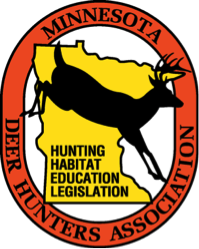Moose population continues to decline; hunting season to be evaluated
(Released February 23, 2012)
Minnesota’s moose population continues to decline, dropping from an estimate of 4,900 in 2011 to 4,230 in 2012, according to the annual aerial survey by the Minnesota Department of Natural Resources (DNR).
“Estimates from the survey and results from research using radio-collared moose both indicate that the population has been declining in recent years,” said Mark Lenarz, DNR forest wildlife group leader.
Minnesota’s moose population was estimated at 8,840 in 2006 and has trended downward since then.
The causes of moose mortality are not well understood. Of 150 adult moose radio-collared since 2002 in Minnesota, 119 have subsequently died, most from unknown causes thought to be diseases or parasites. Ten moose died as a result of highway vehicle accidents. Two were killed by trains. Only 11 deaths were clearly the result of wolf predation.
This year’s aerial survey, however, showed some positive trends. The number of cows accompanied by calves and twin calves increased in 2012, which means more calves can potentially mature into adults. But the cow and calf ratio, estimated at 36 calves per 100 cows in 2012, remains well below 1990s estimates that likely contribute to a peak population in the early 2000s.
The 2012 survey results also showed the bull-to-cow ratio increased from 2011 to an estimated 108 bulls per 100 cows, indicating that more bulls were available to breed with cows.
DECISION ON HUNTING SEASON TO COME
While this year’s aerial survey showed improved calf survival and bull-to-cow ratio, the DNR will be evaluating the data and consulting with tribal biologists before making a decision on a 2012 hunting season. The decision on the season will be announced in the coming weeks.
Last fall, the DNR continued a bulls-only hunting season and cut the number of moose-hunting permits by more than half, from 213 in 2010 to 105.
Although hunting mortality of bulls is not driving the moose population decline, the state’s moose management plan does have science-based triggers for closing the hunting season. One of those triggers is if the bull-to-cow ratio drops below 0.67 bulls-per-cow for three consecutive years.
While the bull-per-cow ratio dropped to .64 bulls/cow in 2011, it went up this year to 1.08.
ABOUT THE AERIAL SURVEY
DNR wildlife researchers estimate the moose population by conducting an aerial survey of the northeastern Minnesota moose range. The surveys, which have been conducted each year since 1960, are based on flying transects in 49 randomly selected plots spread across the Minnesota’s Arrowhead region.
Since 2005, the downward trend in moose numbers, as reflected in the survey data, has been statistically significant.
Moreover, a study of radio-collared moose in northeastern Minnesota between 2002 and 2008 determined that non-hunting mortality was substantially higher than in moose populations outside of Minnesota. Although the formal study ended in 2008, researchers have continued to monitor non-hunting mortality, which has continued to be high.
A new, two-year study begins in 2013 that will concentrate on identifying disease and parasites that might be responsible for high moose mortality. Funding for the $600,000 study comes from the Minnesota Environmental and Natural Resources Trust Fund, which gets proceeds from the Minnesota State Lottery. The funding, recommended by Legislative-Citizen Commission on Natural Resources, has been appropriated by the Minnesota Legislature.
Funding and personnel for the annual DNR aerial survey are also provided by the Fond du Lac band of Lake Superior Chippewa and 1854 Treaty Authority.
A copy of the 2012 aerial survey report is available online at:
http://www.mndnr.gov/hunting/mooseThe DNR’s Moose Management and Research Plan, approved in 2011 as a way to possibly identify causes of moose mortality and potentially slow Minnesota’s declining population, is available online at:
http://www.mndnr.gov/moose



